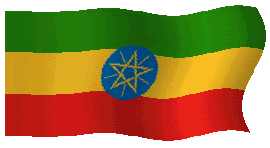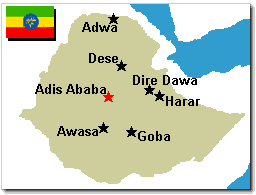Curious as to what Ethiopia identifies as their rainy and dry seasons?
~ The western half of Ethiopia has two distinct seasons. From June-September it is considerably wet and then dry from November-February. The peak time for rainfall occurs from July to August.
~ The central and most of the eastern part of the country have two rainy periods and one dry period. The rainy seasons are know as Kiremt (heavy rains) from June –September, and Belg (light rains) from February-May. The dry season, known as the Bega season, lasts form October-January. The Kirmet rains are essential because 90-95 percent of the food is produced during this main crop season. This is when most parts of the country receive 60-90 percent of their rainfall, so drought during the Kiremt season may lead to a shortage of food. Although the Belg harvest can provide up to 50 percent of the yearly food supply in the some highland areas, it typically accounts for only 5 to 10 percent of the total annual grain production of the country.
~ The south and southeastern parts of Ethiopia have two distinct dry periods, December-February and July-August, and two rain seasons March-June and September-November. The main rain season is referred to as the belg rains because it occurs from March-June.
The rainy seasons in Ethiopia can not only impact their food production but also their daily living. In fact during the heavy rain season, which can cause flooding, the Ethiopian courts actually close for about seven weeks. We have learned to appreciate every season, rain or shine.
“Live each season as it passes; breathe the air, drink the drink, taste the fruit, and resign yourself to the influences of each.” ~ Henry David Thoreau


















Interesting that fall reflects the same colors as the Ethiopian culture. Lovely photos and truly interesting information about the rain. Your daughter will take well to Oregon weather as rain is a part of her DNA heritage. Expect her Ayat to buy her a pair of rubber boots that have horses printed on them! Rain is truly a good thing.... cleanses and nourishes the land as well as the heart and mind if you tune into the peaceful sound of raindrops on the roof or foliage. One of my favorite children's books is about a little girl named Susan who didn't know how to enjoy the rain until some one showed her. Will be a good book for me to read to my granddaughter on rainy days. And after reading the book we will put on our rubber boots, go jump into mud puddles and dance in the rain!!!
ReplyDelete